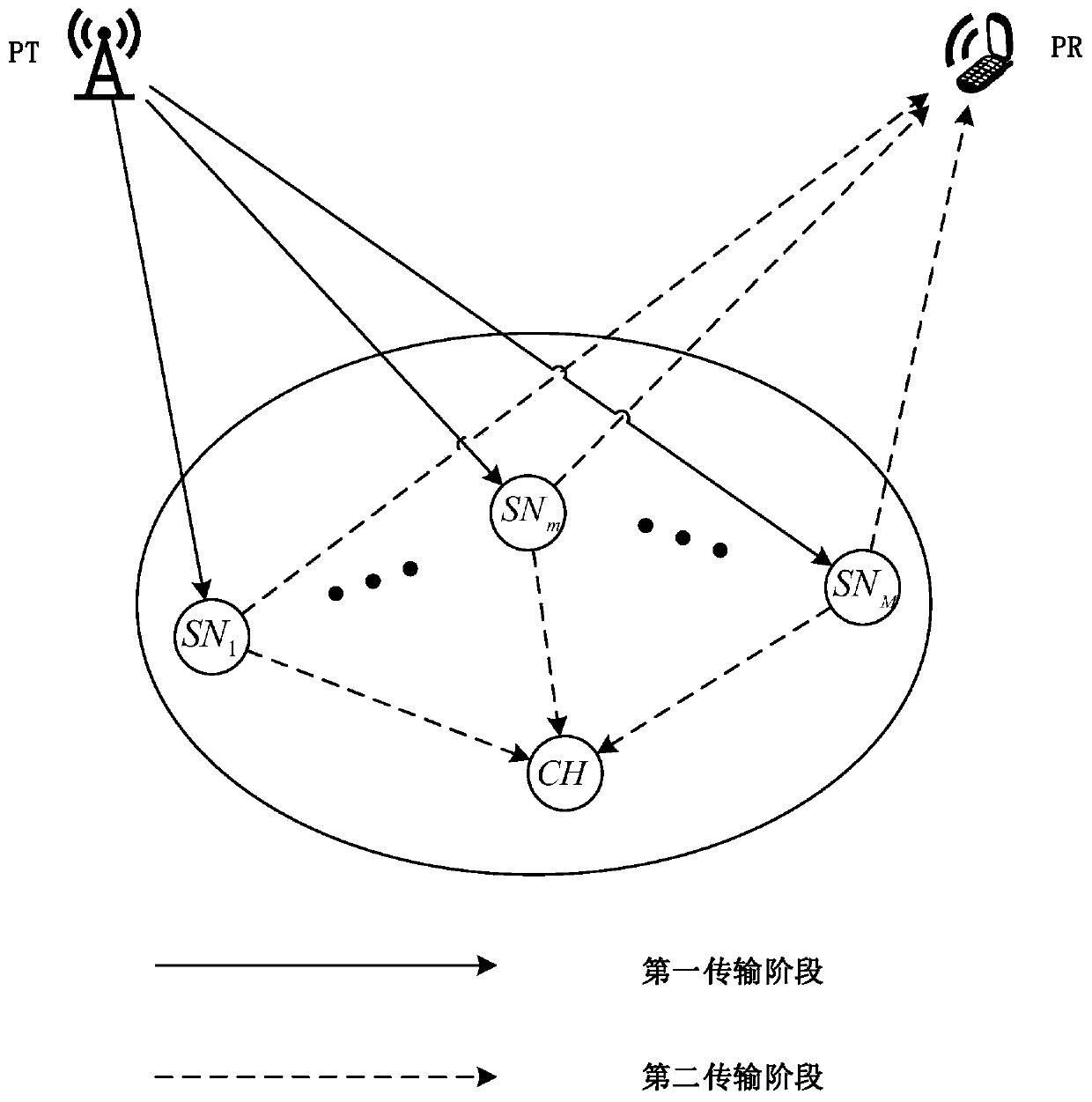Joint resource allocation method of cognitive relay wireless sensor network
A wireless sensor and cognitive relay technology, applied in wireless communication, network topology, power management, etc., can solve the problems of unoptimized power split ratio, power and subcarrier allocation, etc.
- Summary
- Abstract
- Description
- Claims
- Application Information
AI Technical Summary
Problems solved by technology
Method used
Image
Examples
Embodiment
[0049] Examples of the present invention figure 1 As shown, a joint resource allocation method of a cognitive relay wireless sensor network based on SWIPT is realized by the following cognitive relay wireless sensor system: the system includes a main system and a sensor subsystem, and the main system includes a main transmitter PT and a main receiver PR, the sensor subsystem includes M sensor nodes SN m And a cluster head node CH, where the set of sensor nodes is represented by V={1,2,...,M}, m∈V represents the mth sensor node; the communication between the main transmitter and the main receiver must go through The relay of the sensor subsystem adopts the method of decoding and forwarding; the sensor node uses the simultaneous wireless information and power transmission (SWIPT technology), after receiving the signal from the main transmitter, the sensor node will divide the power according to a certain ratio Divide the received signal into two signal streams with different po...
PUM
 Login to View More
Login to View More Abstract
Description
Claims
Application Information
 Login to View More
Login to View More - R&D
- Intellectual Property
- Life Sciences
- Materials
- Tech Scout
- Unparalleled Data Quality
- Higher Quality Content
- 60% Fewer Hallucinations
Browse by: Latest US Patents, China's latest patents, Technical Efficacy Thesaurus, Application Domain, Technology Topic, Popular Technical Reports.
© 2025 PatSnap. All rights reserved.Legal|Privacy policy|Modern Slavery Act Transparency Statement|Sitemap|About US| Contact US: help@patsnap.com



